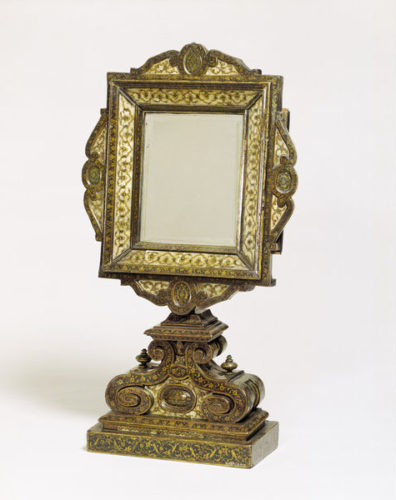Much anatomical innovation in this period took place in Italy and the Netherlands. This early seventeenth-century engraving depicts the anatomy theatre at the University of Leiden, and reveals the extent to which anatomical dissection in this period was understood simultaneously against two frames: the empirical or proto-scientific, and the moral and religious. The Latin title reads: ‘A true sketch of the anatomy theatre at Leiden with the skeletons and remains which are preserved there’. The image is a curious assemblage of figures of the living and the dead. Indeed, the skeletons appear surprisingly lively – almost as animated as the human observers.
Around the central scene of dissection, there are many richly dressed lookers-on. Among them, a woman, centre foreground, holds a mirror - less a traditional symbol of worldly vanities than an inscription of the self-knowledge that can be gained through anatomy. This is counterpointed by a more traditional visual reminder of the moral dangers of immoderate curiosity: see the tableau in the centre foreground, with two skeletons on either side of the tree of knowledge, complete with a serpent coiled around the tree and an apple – the fruit of knowledge – held out by the skeleton on the right. Might the anatomist, prying into the secrets of the human body, be repeating their original sin? Several of the skeletons hold banners with familiar memento mori messages, such as ‘death is the final limit of all things’ and ‘we are dust and shadows’, reminding viewers the worthlessness of human existence compared to the spiritual and divine realms. The discovery of the inside of the body, for all the exhilaration of new knowledge, or perhaps because of it, must remain inseparable from the knowledge of mortality.












